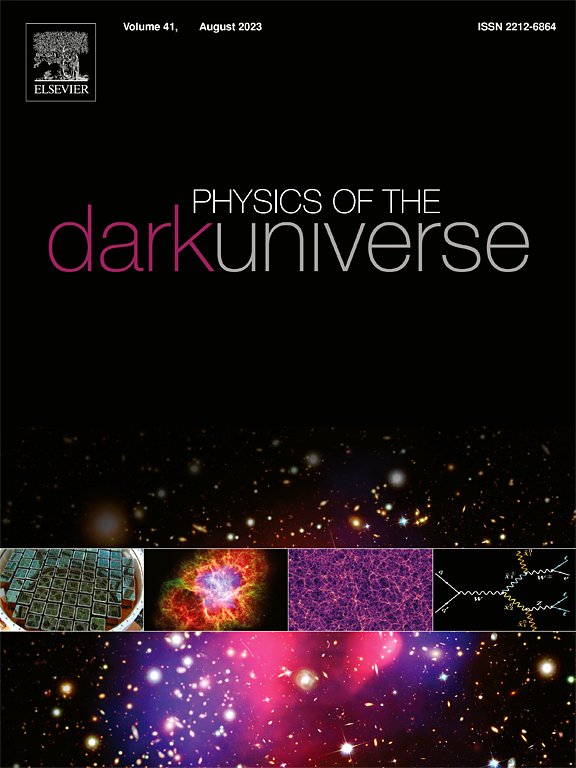视距加速度作为银河汤川潜力的测试
IF 6.4
2区 物理与天体物理
Q1 ASTRONOMY & ASTROPHYSICS
引用次数: 0
摘要
我们预测了直接径向加速度测量的影响,基于相隔十年的同一目标的两次红移测量,将汤川修正限制为银河系中的牛顿势。银河系的物质分布被建模为一个球形凸起、一个球形暗物质晕和两个轴对称圆盘的总和。考虑165个银河系球状星团的样本,我们发现,与使用相同重子物质分布的旋转曲线数据相比,下一代光谱仪的精度(~ 10 cm s−1)不足以提供竞争约束。后一种样品只有在精度优于0.6 cm s−1时才具有竞争力。另一方面,我们发现以1.3×105 RR天琴座恒星群为目标,在~ 10 cm s−1的精度下,对Yukawa参数的约束与旋转曲线的约束一样强。本文章由计算机程序翻译,如有差异,请以英文原文为准。
Line-of-sight acceleration as a test of the Galactic Yukawa potential
We forecast the impact of direct radial acceleration measurements, based on two redshift measurements of the same target one decade apart, on constraining the Yukawa correction to the Newtonian potential in the Milky Way. The Galaxy’s matter distribution is modeled as the sum of a spherical bulge, a spherical dark matter halo, and two axially symmetric disks. Considering a sample of 165 Milky Way globular clusters, we find that the precision of next-generation spectrographs ( 10 cm s−1) is not sufficient to provide competitive constraints compared to rotation curve data using the same baryonic matter distribution. The latter sample only becomes competitive for a precision better than 0.6 cm s−1. On the other hand, we find that adopting a population of RR Lyrae stars as targets, a precision of 10 cm s−1 can achieve constraints on the Yukawa parameters as strong as with the rotation curves.
求助全文
通过发布文献求助,成功后即可免费获取论文全文。
去求助
来源期刊

Physics of the Dark Universe
ASTRONOMY & ASTROPHYSICS-
CiteScore
9.60
自引率
7.30%
发文量
118
审稿时长
61 days
期刊介绍:
Physics of the Dark Universe is an innovative online-only journal that offers rapid publication of peer-reviewed, original research articles considered of high scientific impact.
The journal is focused on the understanding of Dark Matter, Dark Energy, Early Universe, gravitational waves and neutrinos, covering all theoretical, experimental and phenomenological aspects.
 求助内容:
求助内容: 应助结果提醒方式:
应助结果提醒方式:


